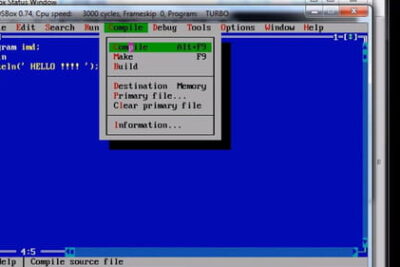
How to install twrp lg g5
How to Install TWRP Recovery and Take Nandroid Backups With TWRP on LG G5

If you're interested in rooting your LG G5, then read on! You'll also learn how to install TWRP recovery on your LG G5 and take Nandroid backups with TWRP. To begin, you must enable USB debugging on your phone. Once you've enabled USB debugging on your phone, open the ADB & Fastboot folder on your computer. Press and hold the Volume Up and Power buttons simultaneously for a few seconds to enter Fastboot mode. Now, run the command adb reboot bootloader. Once this is done, you'll need to flash Root.
Getting root on LG G5
You might be thinking about getting root on your LG G5 if you want to customize it and run custom apps. Rooting the device lets you replace system applications, install custom recovery, and flash a customized version of Android called ROM. Once rooted, your phone is ready to run almost anything you want. But before you proceed, make sure you have a working backup of your personal data. You may need to uninstall some applications to make sure they work.
To get root on LG G5, you must first make sure you have a Windows PC. This procedure will work for both European and T-Mobile variants. However, if your device is not compatible with Windows, you can use a Linux or Mac computer to root it. Moreover, if you are planning to root your LG G5, you should know the risks associated with rooting the device. It may void your warranty, so proceed at your own risk!
Once you've completed these steps, you can proceed to root your LG G5. To do this, you must enable USB debugging on your device. Open the ADB and Fastboot folder on your computer. After installing the program, boot your LG G5 into fastboot mode by pressing and holding the Volume Up and Power buttons simultaneously for several seconds. Then, run adb reboot bootloader to remove any Android updates that may have installed. Finally, you can use adb to flash the root to your LG G5.
Getting root on LG G5 can be a great way to change the look and feel of your phone. The Android OS has many benefits, including support for theme customization, and you can even overclock the CPU to avoid the dreaded overheating. With full kernel control, you can edit batch applications and remove any bloatware from your phone. In addition, you can run custom processes with third-party applications.
After rooting your LG G5, you can install the latest version of ROM. If your phone does not have this, you need to uninstall all of the root apps from your phone. This will ensure that you can root your device without damaging it. Once you've installed the new file, you can follow the rest of the guideline, installing the required platform tools. The first step is to download the SDK tools from the Google Play Store.
Once you're on your way, make sure you follow the instructions carefully. Once you're done, download the TWRP recovery and xda developer app. These are two trusted sources for rooting LG G5 phones. Follow the instructions carefully to prevent your phone from breaking or losing the warranty. And always remember, your phone will need to be unrooted after you've finished rooting it. When you're finished, you'll have access to the latest version of Android, and can run custom applications.
Installing TWRP recovery
If you're wondering how to install TWRP recovery on your LG G5, then you've come to the right place. Using this guide, you can customise your phone and make it your own! But before you start, there are some things you need to know. Unlocking the bootloader is mandatory for rooting and customizing your phone. But if you don't know how to do it, read on to learn how.
To install TWRP recovery on your LG G5, you need to unlock the bootloader on your device. To do this, follow the steps on LG's website. After this, you'll need to boot into the TWRP recovery menu. Once you've done that, you should see the SuperSU app on your screen. Press and hold the Power and Volume down buttons at the same time until the LG logo appears. Then, click the Install button to start installing the recovery.
In order to perform this procedure, you need a computer with USB debugging enabled and the LG G5's USB drivers installed. You'll also need to enable USB debugging and the developer options. Make sure you have USB debugging enabled, and tap on the build number seven times to confirm the procedure. Once this is done, you're ready to install TWRP recovery on LG G5.
To enable USB debugging on your LG G5, you'll need the following software. First, you need to enable USB debugging on your phone. To enable this feature, go to Settings > Software Information, and tap on Developer options. Next, make sure your phone is fully charged, at least 80 percent. Otherwise, you'll run the risk of shutting it down suddenly. Before attempting this step, you should back up the internal memory of your LG G5 with a cloning tool.
Once you've backed up your device, you can root your LG G5 by flashing the latest TWRP recovery image. If you have superuser privileges, you can install a new version of SuperSU. SuperSU requires the SuperSU zip file. You can also flash the SuperSU zip. You can now use TWRP recovery to customize your LG G5.
Before you begin installing TWRP on your LG G5, make sure the battery is at least 90 percent. If you're doing this on a charger, you need to charge your phone before you start the process. Ensure you have a full backup of your phone so that you can recover it if anything goes wrong. Finally, make sure you have the USB and ADB Fastboot drivers installed. You'll need these to perform the install.
If you're using an unlocked LG G5, the process is the same. After you've installed the latest TWRP recovery, you can choose the custom ROM you want to use. TWRP is known for its material design and attractive user interface. It's possible to root your LG G5 H850 by following the steps in this guide. Just make sure you have the right model for this process.
Taking Nandroid backups with TWRP
Making Nandroid backups with TWRP on LG G5 is a necessity for any Android user. By backing up your phone before you flash custom ROMs or root your phone, you'll have an easier time restoring your phone if something goes wrong. To do this, hold the power and volume down buttons together and boot into "Recovery Mode". Once you're in Recovery Mode, you'll see the familiar home screen, but you'll need to press the Backup button.
Taking a nandroid backup is easy and crucial for system tweaking. It makes sure you don't lose any data. Even if your system goes wrong, you can always restore the previous nandroid version, which will make your tweaks permanent. This will prevent any issues from cropping up in the future. And if you're unsure of how to restore your nandroid backup, don't worry!
Before you can perform these steps, you must have an unlocked bootloader. If you're running an unlocked bootloader, you can't install a third-party ROM. You can't get root access if you're running unofficial firmware, so this process can void your warranty. But if you're determined to root your LG G5, you can perform the following:
Once you're on TWRP recovery, you can begin the process of restoring your LG G5 to stock. It's important to note that the process of making a Nandroid backup can only be completed through a custom recovery image, so it's imperative that you perform this step after installing the TWRP recovery and gaining root access. So, if you're worried about restoring your phone to stock, make a Nandroid backup now before you root it.
Before you perform the next step, make sure that you are using the right command. Some TWRP recovery tools don't work properly on certain devices, so you'll need to know what type of device you have. If you don't know, you can still install the latest version of the TWRP recovery. You can flash this back to your device after a couple of days.
TWRP is the most popular custom recovery for Android devices, and it is available for the LG G5 and other phones. It allows you to install custom ROMs, root your device, and take NANDroid backups. The new version of TWRP includes a large changelog and lots of bug fixes. There are many advantages to TWRP. However, if you don't have one yet, don't worry. It's still worth trying.
Once you've installed TWRP, you'll need to power down your device. Then, press and hold the power and volume down buttons together to boot into recovery mode. Next, you'll need to enable USB Debugging and Developer Options. Once you're in the recovery mode, you'll see a recovery mode menu. Now, you can backup your phone!
Leave a Reply





You may also like